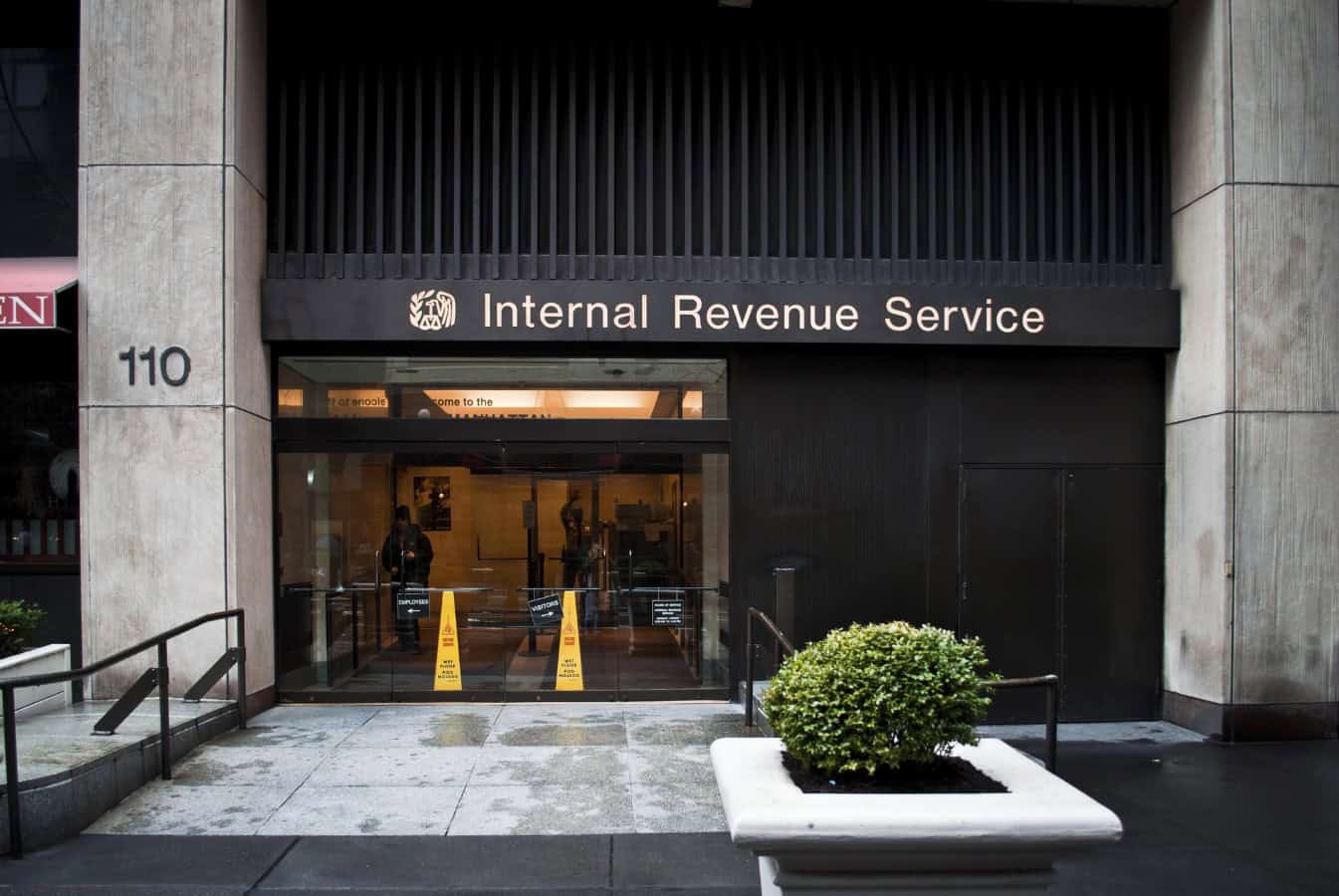Big 2026 Refunds Ahead As Trump’s Tax Bill Kicks In, JPMorgan And Oxford Economics Say – Financial Freedom Countdown
Millions of Americans could see significantly larger tax refunds when they file their 2025 returns early next year; and both Oxford Economics and JPMorgan Asset Management say the surge is real.
The driver behind the coming “refund wave” is former President Donald Trump’s “One Big Beautiful Bill Act,” a sweeping tax overhaul that took effect retroactively at the start of 2025.
Both research firms say the combination of new deductions, delayed IRS withholding adjustments, and expanded tax breaks will result in tens of billions in overpaid taxes being refunded in 2026.
Oxford Economics estimates that total taxpayer savings could reach $50 billion through bigger refunds or lower 2026 tax bills.
JPMorgan’s strategists say the early-year refund bump could be strong enough to noticeably lift household spending and short-term economic growth.
JPMorgan: Refund Surge Could Ripple Through the Economy

In a recent client note, JPMorgan Asset Management’s chief global strategist David Kelly said the IRS’s decision to keep 2025 withholding tables unchanged will ensure “an even larger crop of personal income tax refunds early in 2026 than was anticipated when the OBBBA was passed.”
Kelly said the refunds could act like “a round of stimulus checks,” giving households a spending boost early next year.
However, he also cautioned that the effect would be temporary and may not translate into sustained economic growth.
Where JPMorgan diverges slightly from Oxford Economics is in its emphasis: Oxford focuses on aggregate taxpayer savings and household financial benefit, while JPMorgan’s team frames it as a macroeconomic event that could add to consumer demand and briefly lift inflation.
Despite the nuance, both agree the refund effect will be large and positive for most Americans.
Oxford Economics: Refund Wave Could Reach $50 Billion

Oxford lead economist Nancy Vanden Houten projects that the combined impact of Trump’s new deductions and unchanged withholding could produce an 18% jump in total refunds next year compared to the 2025 filing season.
That translates to roughly $50 billion in additional refunds, on top of the $275 billion the IRS issued this year to nearly 94 million taxpayers.
Many taxpayers will pay too much in tax this year and see larger tax refunds or smaller tax bills next year than otherwise would be the case. That will likely produce a windfall at tax time in 2026.
Both Oxford and JPMorgan agree the timing will matter: with most refunds arriving in February and March 2026, the surge could temporarily boost consumer confidence, spending, and liquidity.
Trump’s “One Big Beautiful Bill” Extends and Expands 2017 Tax Cuts

Signed by President Trump in July 2025, the One Big Beautiful Bill Act (OBBBA) builds on and expands his signature 2017 Tax Cuts and Jobs Act, adding new incentives and deductions aimed at middle-income earners, seniors, and service workers.
The law:
Eliminates federal income tax on tips and overtime pay through 2028.
Adds a $6,000 deduction for taxpayers aged 65 and older ($12,000 for joint filers).
Raises the state and local tax (SALT) deduction cap from $10,000 to $40,000.
Makes higher standard deductions and child tax credits permanent.
Introduces a deduction for auto loan interest, meant to offset rising borrowing costs.
Collectively, these provisions amount to one of the largest middle-class tax changes since the original Trump tax cuts in 2017.
Why Refunds Are Rising So Sharply

The key to this year’s refund surge lies in timing. The IRS announced that no changes will be made to withholding tables or Form W-2 for 2025, giving employers and payroll providers more time to implement the complex OBBBA changes.
That means taxes are still being withheld under old rules; effectively overcharging most workers throughout 2025.
When they file returns in early 2026, the difference between what they paid and what they actually owe will come back as a larger refund.
According to both Oxford and JPMorgan, this temporary gap between old withholding rates and new deductions will amplify the size of refunds in the first half of 2026.
Breakdown of Seven Refund Provisions Under Trump’s “One Big Beautiful Bill”

1. Tax-Free Overtime Pay
Workers can exclude up to $12,500 in overtime pay per year from taxable income through 2028. This change primarily benefits hourly and shift-based workers.
2. Tax-Free Tips
Tipped workers; including servers, bartenders, and gig economy earners can deduct up to $25,000 of tips annually from taxable income. Applies retroactively to January 2025.
3. Senior Deduction Expansion
Taxpayers aged 65 and older can claim an additional $6,000 deduction (or $12,000 per couple) on top of the standard deduction, saving retirees an estimated $9.3 billion total.
4. SALT Deduction Cap Raised to $40,000
The cap on state and local tax deductions jumps from $10,000 to $40,000, disproportionately benefiting homeowners and professionals in high-tax states.
5. Auto Loan Interest Deduction
Taxpayers can now deduct up to $10,000 in auto loan interest, an incentive meant to ease the burden of record-high car loan rates.
6. Expanded Child and Family Credits
The bill makes Trump-era child tax credits permanent and introduces a $1,200 family caregiver credit for those supporting elderly parents or dependents.
7. Permanent Standard Deduction Increases
The higher standard deduction; currently $31,500 for married couples and $15,750 for single filers; is now permanent, ensuring broad middle-class benefit.
Who Benefits Most

The Oxford report emphasizes that the refund surge won’t be evenly distributed. The biggest gains will go to higher-income households and homeowners who itemize deductions and can take full advantage of the expanded SALT deduction.
A Tax Policy Center analysis cited by Oxford estimates that $6 of every $10 in new tax breaks from Trump’s bill will go to the top 20% of households, or those earning more than $217,000 per year.
Still, middle- and working-class families will benefit through larger standard deductions, bigger child tax credits, and new relief for tips, overtime, and auto loan interest; all of which apply retroactively to January 1, 2025.

Under the One Big Beautiful Bill Act (OBBBA), seniors age 65 and older can claim a new, temporary $6,000 deduction starting in 2025, which expires after 2028.
This deduction is available whether you take the standard deduction or itemize your deductions.
It serves as a substitute for Trump’s “no tax on Social Security” promise, as there is no separate provision for Social Security.
The deduction applies to taxpayers who are 65 or older by the last day of the tax year.
It is in addition to the current senior standard deduction and can be claimed by all eligible seniors, regardless of itemizing.
For married couples where both spouses qualify, the deduction doubles to $12,000.
Taxpayers must include their Social Security Number on the return and file jointly if married.
Oxford Economics estimates the provision will deliver about $9.3 billion in savings, roughly $12,000 for married couples who both qualify.
The deduction phases out for individuals earning more than $75,000, or $150,000 for joint filers.
SALT Deduction Cap Quadrupled

Trump’s law raises the SALT deduction cap from $10,000 to $40,000, allowing taxpayers in high-tax states like California, New York, and New Jersey to write off more of what they pay in property and state income taxes. This cap is also scheduled to increase by 1% each year from 2026 to 2029.
Oxford estimates this single change will generate about $5.1 billion in savings, with the biggest benefits concentrated among affluent households who itemize deductions.
Phase-outs start at $500,000 MAGI.
Tip Income Gets a Break

Under the new tax law, tip income will be deductible for tax years 2025 through 2028, whether or not you itemize your deductions.
This deduction applies to qualified tips; cash or credit card tips, earned in jobs the IRS identifies as customarily receiving tips as of December 31, 2024.
The Treasury Department has published the official list of eligible occupations..
The maximum deduction is $25,000 per year.
For self-employed workers, the deduction cannot exceed the net income from the business where the tips were earned.
To claim it, taxpayers must include their Social Security Number on their return and file jointly if married.
The deduction gradually phases out for those with a modified adjusted gross income (MAGI) above $150,000 for single filers and $300,000 for joint filers.
No Tax On Overtime Pay

Unlike tips, overtime pay did not previously have separate reporting lines on Form W-2 because regular wages and overtime were taxed the same.
Under the new law, workers can claim a deduction for qualified overtime pay of $12,500 for singles and $25,000 for married couples filing jointly.
Like the tip deduction, this is a temporary deduction for tax years 2025 through 2028 and applies whether or not you itemize.
For this rule, overtime compensation is defined as the amount above your regular rate of pay; essentially the “half” portion of time-and-a-half pay. Only this extra portion qualifies for the deduction.
While the IRS had previously indicated that overtime pay should be reported on Form W-2, Form 1099, or another statement, the lack of W-2 changes in 2025 means it’s currently unclear how this income will be reported for claiming the deduction.
Auto Loan Interest Deduction

A temporary deduction allows taxpayers to deduct interest on qualified auto loans from 2025 through 2028.
It applies to personal use vehicles on a loan originated after 2024 with final assembly in America.
The deduction phases out for MAGI above $100,000 (single) or $200,000 (joint filers).
Retroactive application to January 1, 2025, provides relief to households paying higher auto loan interest.
Economists at both JPMorgan and Oxford expect these provisions to broaden participation in the refund wave, giving hourly and middle-income workers their largest refunds in years.
Permanent Increase in the Standard Deduction

The standard deduction is permanently increased under OBBBA: $15,750 for singles and $31,500 for married couples filing jointly in 2025, indexed annually for inflation.
This permanent boost simplifies filing for millions, reduces taxable income across the board, and complements temporary deductions for tips, overtime, and seniors.
Permanent Boost to the Child Tax Credit

The child tax credit is permanently raised to $2,200 per child. The credit will be adjusted annually for inflation starting in 2026.
Phase-outs apply at $200,000 MAGI for singles and $400,000 MAGI for joint filers. Fully refundable, it ensures low- and middle-income families receive the maximum benefit, further increasing expected refunds.
The Bigger Picture

While Oxford highlights the household-level windfall, JPMorgan frames the phenomenon as a temporary economic boost that could subtly alter growth forecasts.
Both agree the refund surge will hit in early 2026, and both expect it to fade later in the year once spending normalizes.
Still, for millions of taxpayers, next spring’s filings could bring an unmistakable sense of relief; and the most visible payoff yet from Trump’s new tax law.
Like Financial Freedom Countdown content? Be sure to follow us!
Seniors Are Leaving Medicare Advantage in Droves — Here’s Why Many Say Medigap Is Worth the Higher Cost

As Medicare open enrollment kicks into high gear, millions of older Americans are taking another look at their health coverage. For many, it’s a high-stakes decision between staying in a Medicare Advantage plan or switching to a Medigap policy, also known as Medicare Supplement Insurance. It’s not just about premiums; it’s about access, predictability, and peace of mind. And while Medicare Advantage enrollment has surged in recent years, a growing number of retirees are quietly reversing course.
Goldman Sachs Warns: The Retirement Math No Longer Works—Even for the Rich

Goldman Sachs’ 2025 Retirement Survey & Insights Report paints a sobering picture of the American retirement landscape. The traditional wisdom of “save more and you’ll be fine”; is increasingly out of touch with the financial pressures millions of Americans face. The firm calls it the “new economics of retirement,” and it challenges one of the nation’s most deeply held assumptions: that diligent saving alone guarantees security.
Goldman Sachs Warns: The Retirement Math No Longer Works—Even for the Rich
Social Security’s “Full Retirement Age” May Get a Rebrand; But Critics Say It Misses the Real Problem

Most Americans don’t actually know when they qualify for their full Social Security benefits. A recent survey by the Nationwide Retirement Institute found that only 21% of adults could correctly identify the age when they can claim 100% of their earned benefits. The confusion isn’t surprising; the program’s terminology has long been a tangle of jargon and outdated phrases.

Did you find this article helpful? We’d love to hear your thoughts! Leave a comment with the box on the left-hand side of the screen and share your thoughts.
Also, do you want to stay up-to-date on our latest content?
1. Follow us by clicking the [+ Follow] button above,
2. Give the article a Thumbs Up on the top-left side of the screen.
3. And lastly, if you think this information would benefit your friends and family, don’t hesitate to share it with them!

John Dealbreuin came from a third world country to the US with only $1,000 not knowing anyone; guided by an immigrant dream. In 12 years, he achieved his retirement number.
He started Financial Freedom Countdown to help everyone think differently about their financial challenges and live their best lives. John resides in the San Francisco Bay Area enjoying nature trails and weight training.
Here are his recommended tools
Personal Capital: This is a free tool John uses to track his net worth on a regular basis and as a retirement planner. It also alerts him wrt hidden fees and has a budget tracker included.
Platforms like Yieldstreet provide investment options in art, legal, real estate, structured notes, venture capital, etc. They also have fixed-income portfolios spread across multiple asset classes with a single investment with low minimums of $10,000.